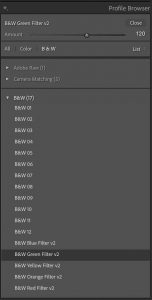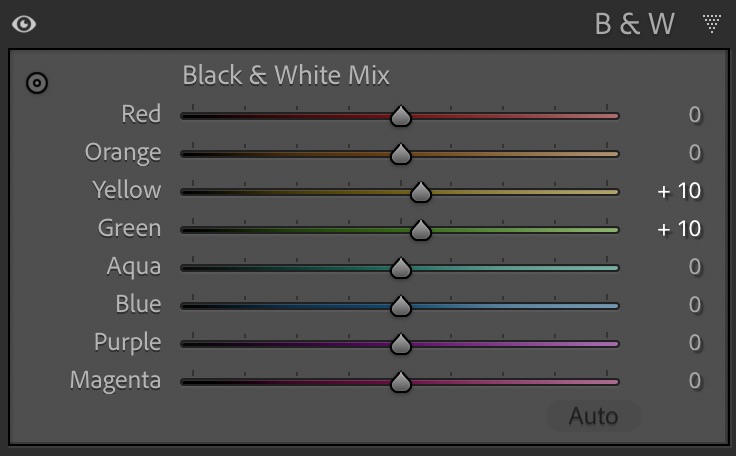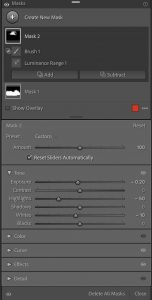![]() Adobe Photoshop Lightroom Classic provides photographers with a powerful set of tools to make color images into black and white. In this video tutorial, you will learn how to create compelling black and white photographs using Lightroom’s Profile Browser and the Black and White Mix panel.
Adobe Photoshop Lightroom Classic provides photographers with a powerful set of tools to make color images into black and white. In this video tutorial, you will learn how to create compelling black and white photographs using Lightroom’s Profile Browser and the Black and White Mix panel.
Click here to download the examples in this video and play along! (Subscribers Only)
![]()

The Power of the Profile Browser
The Profile Browser is a hidden panel inside of Lightroom Classic’s Develop Module that contains a wide variety of black and white starting points. These profiles remap the colors of your original image into intriguing shades of gray.
Choosing a good profile for your initial color to black and white conversion is vital to the success of your finished product. No other part of the entire process is as important as this step and once you have chosen a profile that you like, you can amplify or reduce the profile’s strength using the Amount slider!
Refining with the Black and White Mix Panel
You can refine some of the tones in your image using the Black and White Mix panel after you have picked a good profile. The eight sliders in this panel make use of your image’s original color data and you can use them to refine the brightness for specific parts of your black and white image.

Moving the Blue slider, for example, towards a positive value tells Lightroom to remap all of the areas that were blue in your original image over to brighter shades of gray. Moving any of these sliders towards a negative value has the opposite effect.
You can either drag the Black and White Mix panel’s controls around yourself or you can activate the Target Adjustment Tool for additional assistance. Be gentle though when using these tools. Moving the Black and White Mix sliders too far can create weird artifacts or banding into your final image.
Fine-Tuning with the Exposure Controls and the Tone Curve Panel
At this point in your black and white image processing workflow, you should turn to the six exposure controls in the middle of Lightroom’s Basic panel and the Tone Curve panel. Use these controls to further refine the overall brightness and contrast throughout your entire image and to maximize your image’s tonal separation.
Extending your images tonal range from almost inky black all the way up to almost pure white will usually give your image maximum impact.

Targeted Enhancements with the Masking Tools
Finally, Lightroom’s Masking Tools can be used for carefully targeted adjustments to specific parts of your black and white image. You can use Lightroom’s amazing new AI-powered selection tools to target your subject or the sky.
You can also use tools like Luminance Range or the Brush Tool, and advanced mask building modes like Intersect, to increase the sharpness, brightness, or contrast of specific areas. Working with masks, you can push your viewer’s attention over to the areas that you want them to notice in your final image and pull their attention away from areas that you want them to ignore.
If you follow this complete step-by-step black and white image processing routine then you can unleash your creativity and elevate your black and white photography to new heights!